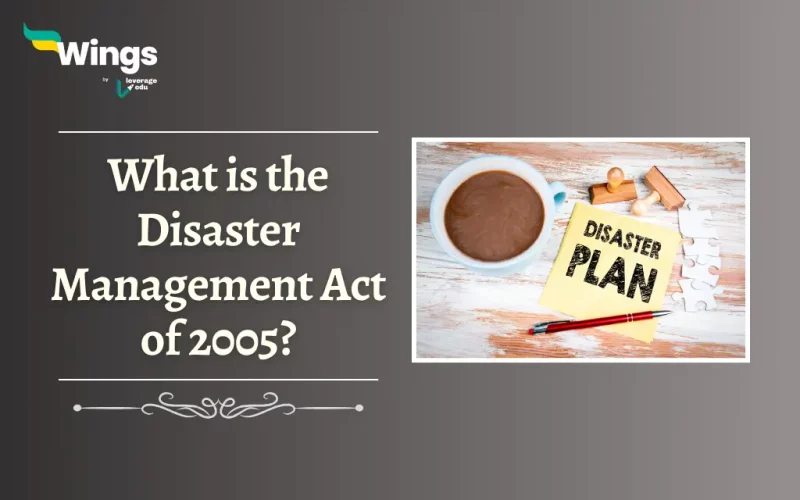The Upper House of the Parliament, Rajya Sabha, and Lower House of Parliament, Lok Sabha passed the Disaster Management Act on the 28th of November and the 12th of December 2005, respectively. Furthermore, the President of India approved on the 23rd of December 2005. Additionally, this act has 11 chapters and 79 sections. Moreover, the Prime Minister of India heads the National Disaster Management Authority and is the only body for disaster management in India. In addition, the Act provides strategic and effective ways to face and fight natural disasters and what to do afterwards. Read on to learn about the Disaster Management Act of 2005, when the Disaster Management Act was made as well as about the NDMA.
Also Read- What is the Full Form of DDMA?
Table of Contents
The Disaster Management Act was made in 2005 hence the National Disaster Management Authority came into existence.
| National Disaster Management Authority (NDMA) | |
| Aspect | Details |
| Organisation | National Disaster Management Authority (NDMA) |
| Head | Prime Minister of India |
| Mandate | Enabling institutional mechanisms at the State and District levels as per the Disaster Management Act, 2005. Laying down policies, plans, and guidelines for Disaster Management. |
| Vision | Development of an ethos of Prevention, Mitigation, Preparedness, and Response. |
| Objective | Promote national resolve to mitigate damage and destruction caused by natural and man-made disasters through sustained and collective efforts. |
| Approach | Technology-driven, Proactive, Multi-Hazard, and Multi-Sectoral strategy for building a Safer, Disaster Resilient, and Dynamic India. |
| Collaboration | Involves Government agencies, Non-Governmental Organizations, and People’s participation. |
Criticism of the Disaster Management Act
Furthermore, this policy disproportionately disadvantages certain marginalized communities and social groups.
- This includes Non-governmental organizations (NGOs), local communities, representatives, and civic groups.
- Moreover, it also reinforces a centralized, top-down approach to governance, concentrating power in the hands of state and district authorities.
- Additionally, it is been noticed that this Act was a law that the lawmakers made for themselves.
Related Blogs
This is everything about the Disaster Management Act 2005. Moreover, you may even read more blogs and empower yourself with knowledge regarding Civics and Polity!
 One app for all your study abroad needs
One app for all your study abroad needs













